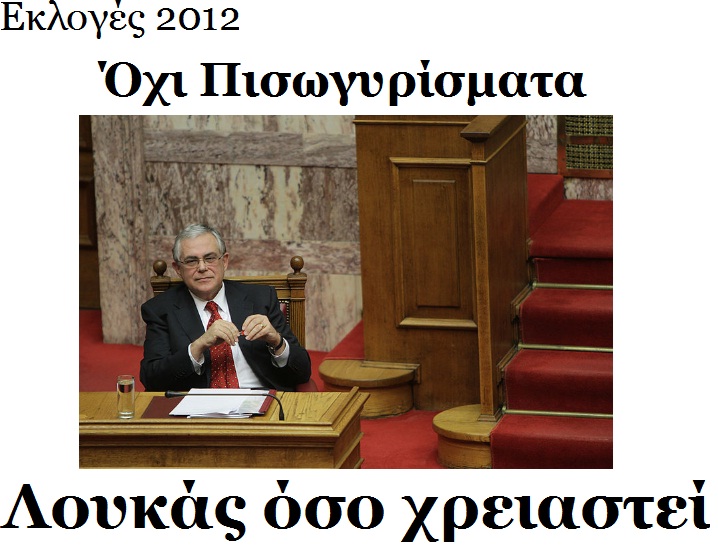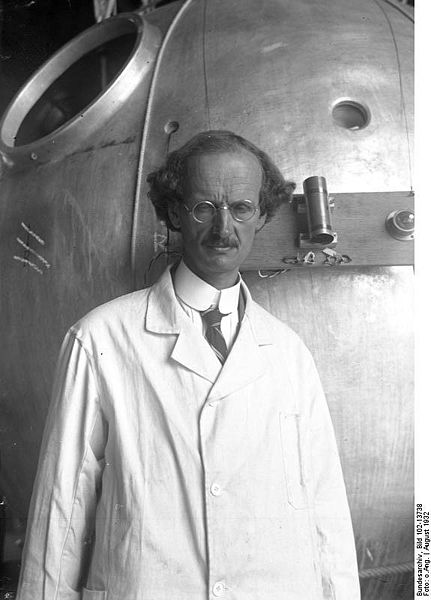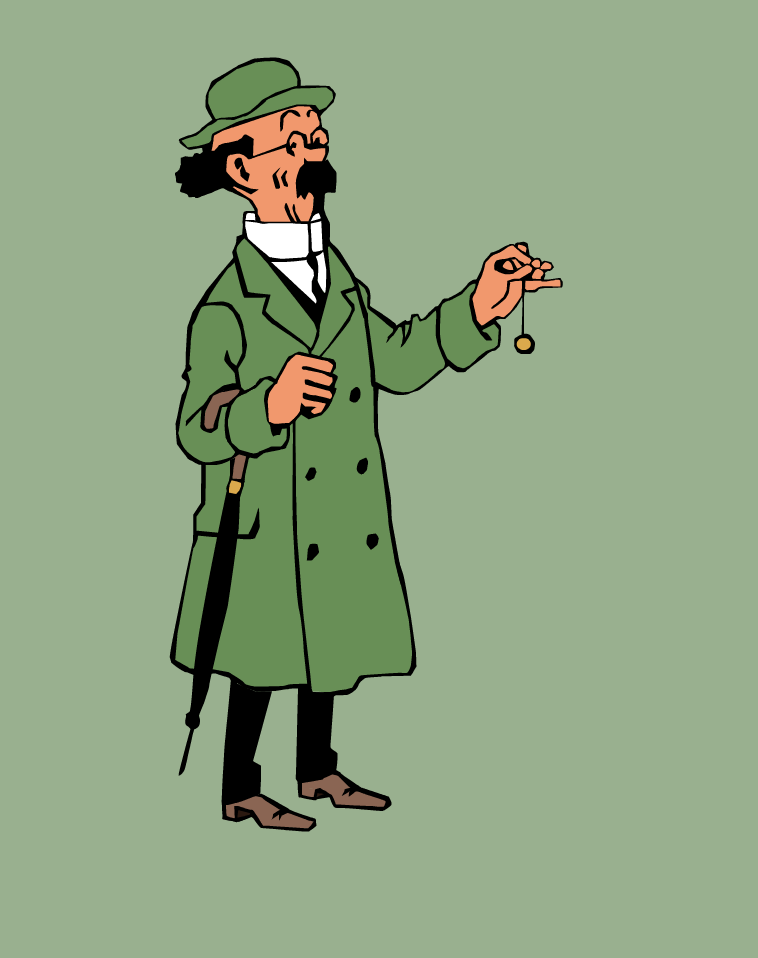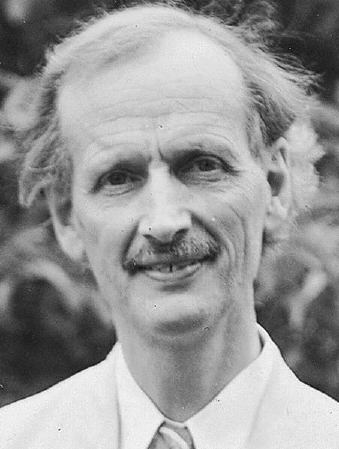<Back to Index>
- Physicist and Chemist Auguste Antoine and Jean Felix Piccard, 1884
- Pianist Arthur Rubinstein, 1887
- King of Denmark Frederick VI, 1768
PAGE SPONSOR




Auguste Antoine Piccard (28 January 1884 – 24 March 1962) was a Swiss physicist, inventor and explorer. Piccard and his twin brother Jean Felix were born in Basel, Switzerland. Showing an intense interest in science as a child, he attended the Swiss Federal Institute of Technology in Zurich, and became a professor of physics in Brussels at the Free University of Brussels in 1922, the same year his son Jacques Piccard was born. He was a member of the Solvay Congress of 1927.
In 1930, an interest in ballooning, and a curiosity about the upper atmosphere led him to design a spherical, pressurized aluminum gondola that would allow ascent to great altitude without requiring a pressure suit. Supported by the Belgian Fonds National de la Recherche Scientifique (FNRS) Piccard constructed his gondola. On 27 May 1931, Auguste Piccard and Paul Kipfer took off from Augsburg, Germany, and reached a record altitude of 15,785 m (51,775 ft). During this flight, Piccard was able to gather substantial data on the upper atmosphere, as well as measure cosmic rays. On 18 August 1932, launched from Dübendorf, Switzerland, Piccard and Max Cosyns made a second record breaking ascent to 16,200 m (53,152 ft). He ultimately made a total of twenty-seven balloon flights setting a final record of 23,000 m (72,177 ft).
In
the mid 1930s, Piccard's interests shifted when he realized that a
modification of his high altitude balloon cockpit would allow descent
into the deep ocean. By 1937, he had designed a small steel gondola to
withstand great external pressure. Construction began, but was
interrupted by the outbreak of World War II.
Resuming work in 1945, he completed the bubble shaped cockpit that
maintained normal air pressure for a person inside the capsule even as
the water pressure outside increased to over 46 MPa (6,800 pounds per
square inch). Above the heavy steel capsule, a large flotation tank was
attached and filled with a low density liquid for buoyancy. Liquids are
relatively incompressible and can provide buoyancy that does not change
as the pressure increases. And so, the huge tank was filled with
gasoline, not as a fuel, but as flotation. To make the now floating
craft sink, tons of iron were attached to the float with a release
mechanism to allow resurfacing. This craft was named FNRS-2 and made a number of unmanned dives in 1948 before being given to the French Navy in 1950. There, it was redesigned, and in 1954, it took a man safely down 4,176 m (13,700 ft).
- Auguste Piccard was the inspiration for Professor Cuthbert Calculus in The Adventures of Tintin by Belgian cartoonist Hergé. Piccard held a teaching appointment in Brussels where Hergé spotted his unmistakable figure in the street.
- This connection was confirmed by Hergé in an interview with Numa Sadoul.
- "Calculus is a reduced scale Piccard, as the real chap was very tall. He had an interminable neck that sprouted from a collar that was much too large... I made Calculus a mini-Piccard, otherwise I would have had to enlarge the frames of the cartoon strip."
- Gene Roddenberry named Captain Jean-Luc Picard in Star Trek for one or both of the twin brothers Auguste and Jean Felix Piccard (on more than one occasion, he denies being a descendant), and derived Jean-Luc Picard from their names.
Jean Felix Piccard (Basel, Switzerland, January 28, 1884 – January 28, 1963, Minneapolis, Minnesota), also known as Jean Piccard, was a Swiss-born American chemist, engineer, professor and high altitude balloonist. He invented clustered high altitude balloons, and with his wife Jeannette, the plastic balloon. Piccard's inventions and co-inventions are used in balloon flight, aircraft and spacecraft. Captain Jean-Luc Picard of Star Trek is named for one or both of him and his twin brother Auguste - in fact, it was sometimes hinted that the character may be descended from the scientist.
Piccard and Jeannette Ridlon met at the University of Chicago where he taught and she received her masters degree. They married and had three sons, John, Paul and Donald, and also had foster children. During the 1980s, Gene Roddenberry named the character Captain Jean-Luc Picard in Star Trek: The Next Generation for one or both of the Piccard brothers and derived Jean-Luc from Jean's name.
Piccard was the co-pilot for his wife Jeannette on the third and final voyage of the Century of Progress. The largest balloon in the world was conceived for him to fly at the World's Fair in 1933 but was flown there by US Navy pilots who were licensed. After
this flight he created the liquid oxygen converter when the liquid
failed to vaporize on descent after the cabin doors were open. Piccard developed a frost free window, that was used on this flight and later by the Navy and Air Force in the B-24 Liberator or B-26 Marauder. He used blasting caps and TNT for
releasing the balloon at launch and for remote release of external
ballast from inside the sealed cabin. This was the first use of pyrotechnics for remote controlled actuating devices in aircraft, an unpopular, revolutionary idea at the time. Later his student Robert R. Gilruth, who became the director of the NASA Manned Spacecraft Center, approved and used them in spacecraft.
The July 21st, 1952 issue of The Canberra Times newspaper printed a front page article in which Mr. Picard claimed it would be possible for humans to fly to Mars with balloons as early as 1954, if anyone was willing to invest $250,000.
In 1935 and 1936, to reduce weight and thus enabling a balloon to reach higher altitudes, plastic balloon construction began independently by Max Cosyns in Belgium, Erich Regener in Germany, and Thomas H. Johnson and Jean Piccard, then at the Franklin Institute Bartol Research Foundation in Swarthmore, Pennsylvania. Johnson suggested cellophane to Jean Piccard.
Piccard with his wife co-invented the plastic balloon and
he designed and in 1936 flew a cellophane balloon built by his
students. The balloon was unmanned, 25 feet wide, and made of tapered
33-foot gores and one-inch 3M Scotch transparent
tape. Jean Barnhill, Harold Larson and Lloyd Schumacher cut the gores
that fit together like an "orange peel." Harold Hatlestad built the
radio equipment and Robert Silliman built the telemeter that
sent temperature and pressure data back. Robert Hatch and Silliman
maintained radio contact from a station on the roof of the university
armory until the radio's battery froze from insufficient insulation. The balloon floated at 50,000 feet, and in ten hours traveled over 600 miles to near Huntsville, Arkansas.
Developed with John Ackerman of the University of Minnesota and piloted by Jean Piccard in 1937 in Rochester, Minnesota, the first multi-celled balloon was called The Pleiades and was made of 98 latex rubber balloons. In a letter to Robert Gray of the Dewey and Almy Chemical Co. later published in Time magazine,
Piccard describes how he broke balloons with a hunting knife and
revolver to control his descent. A TNT charge released the cluster as
he expected but sent burning excelsior down that destroyed the first Pleiades. He suggested to Gray that rock wool in place of excelsior would prevent similar accidents in the future.
Balloon research stopped for the most part during World War II.
In February 1946 with Otto C. Winzen,
Jean Piccard proposed manned flight to the US Navy using clustered
balloons made of thin plastic. In June the Office of Naval Research
approved Project Helios and that year General Mills and the University of Minnesota contracted to build a cluster of 100 polyethylene balloons for atmospheric research. Helios was designed to reach 100,000 feet for ten hours with a payload of instruments.
Jean Piccard helped Winzen design the Skyhook polyethylene balloons that replaced Project Helios in 1947. Skyhook balloons were used unmanned for atmospheric research by the Navy and for manned flights by the US Air Force. Later Jean Piccard developed electronics for emptying ballast bags.
Piccard died on January 28, 1963 (his 79th birthday) in Minneapolis.